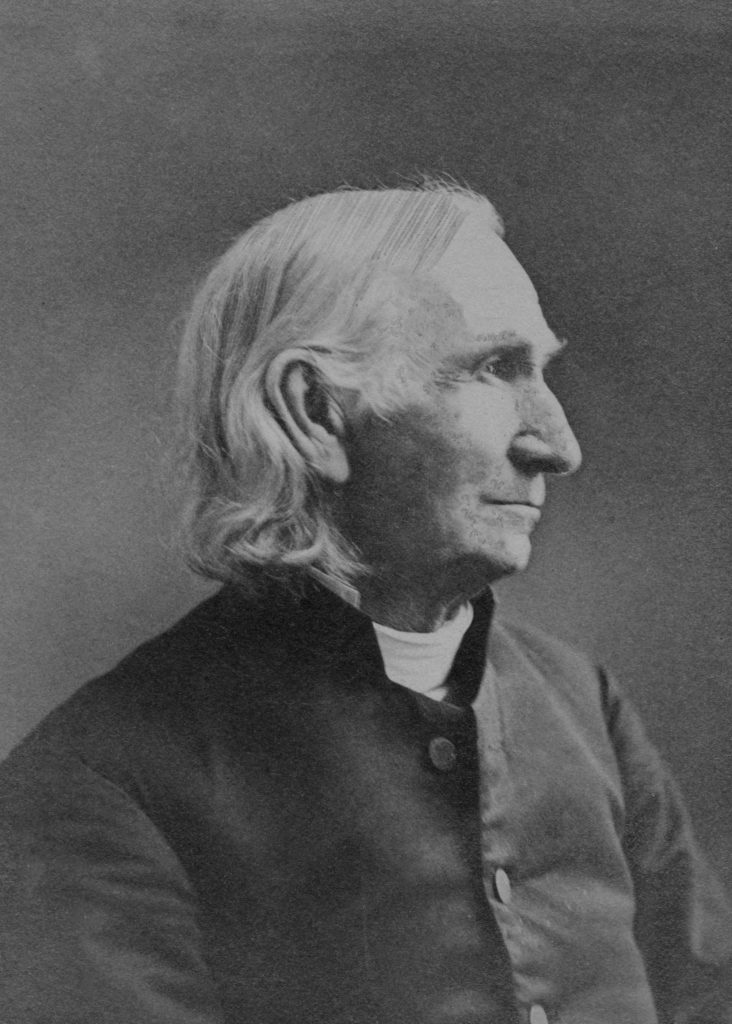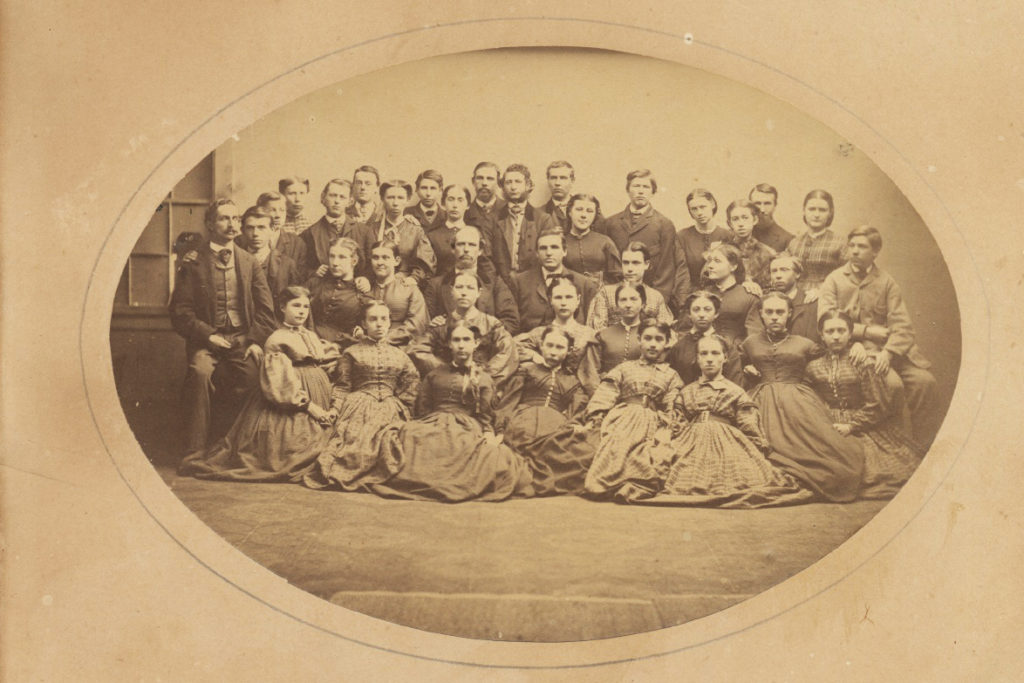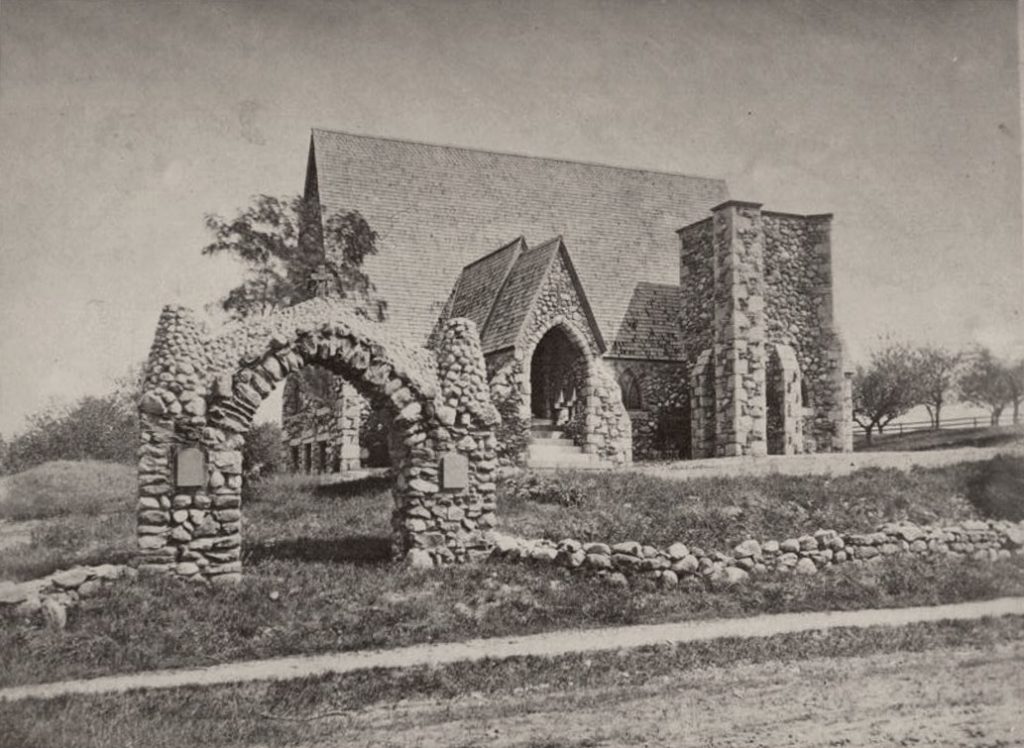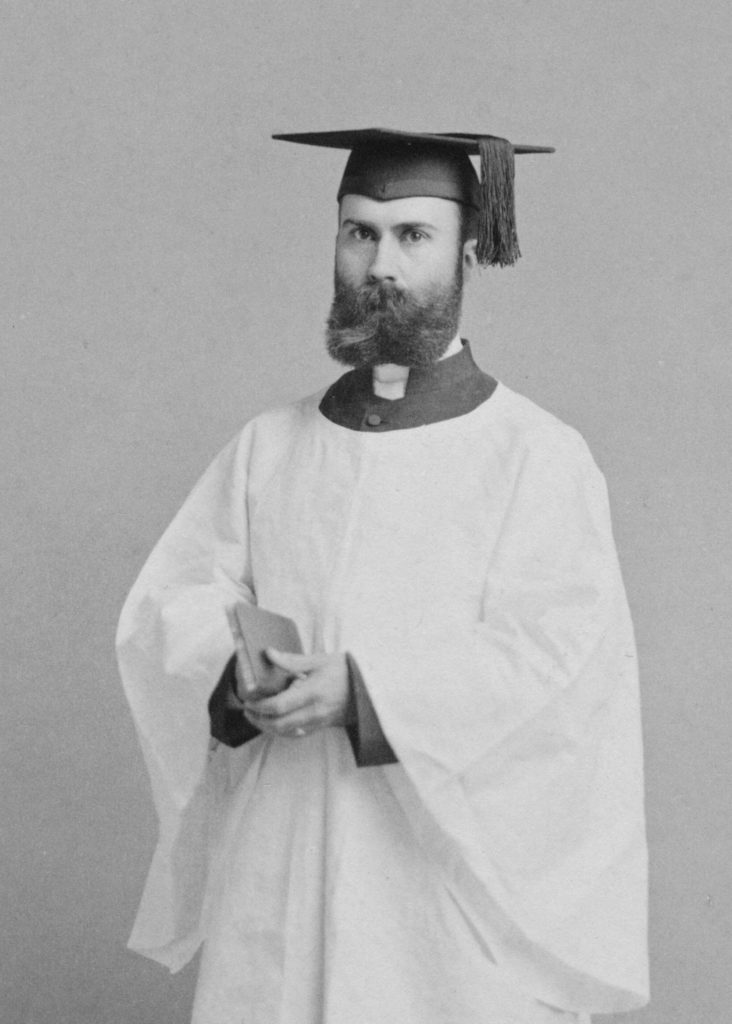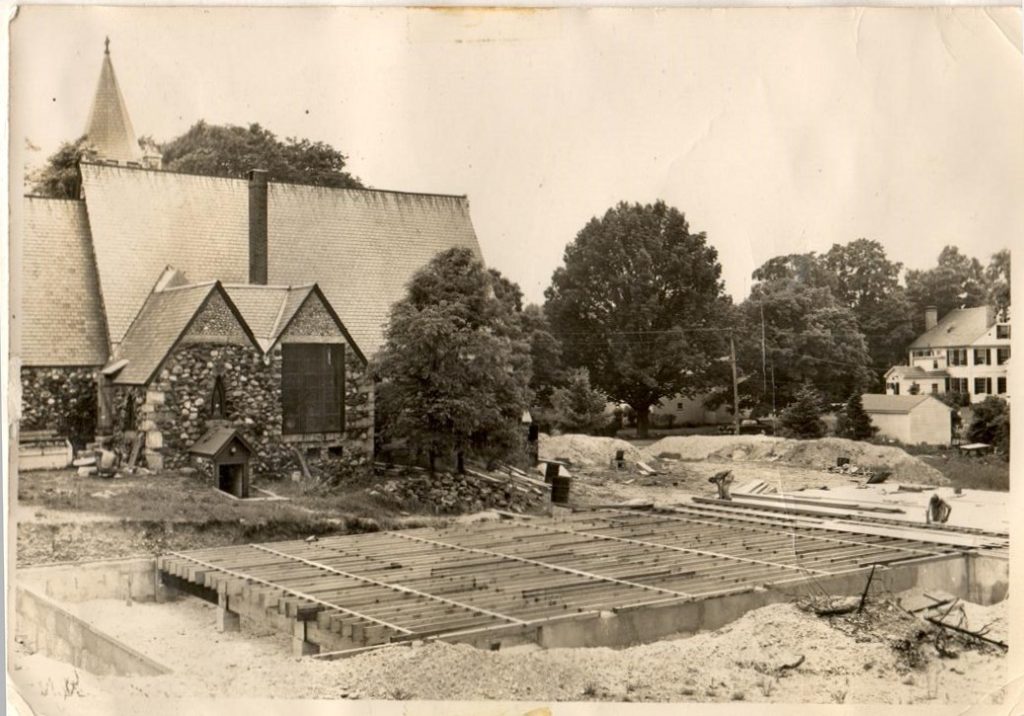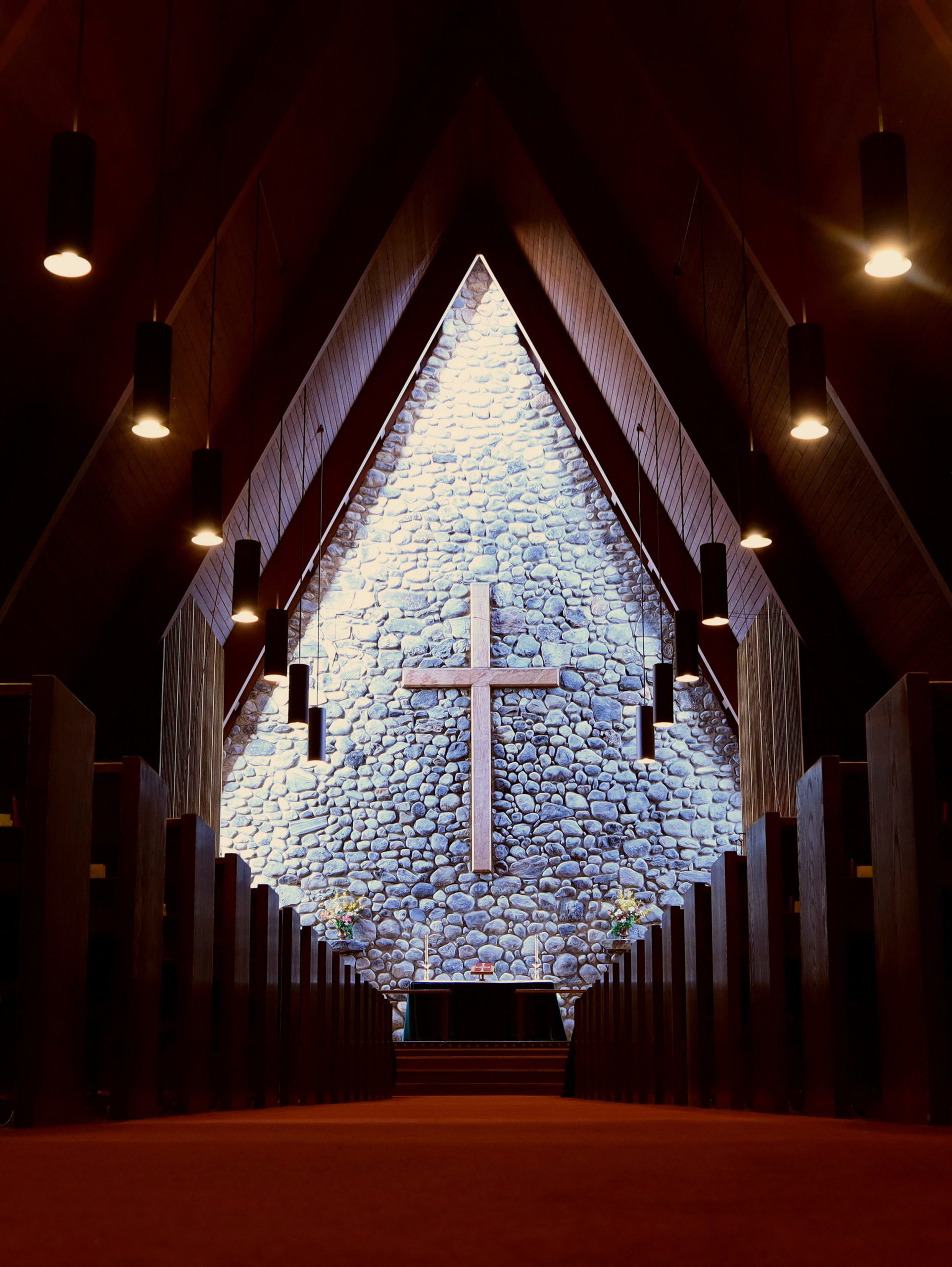In the 1850’s, Miss Anna Eliza Hunt (No known image) wrote to the Rev. Theodore Edson, Rector of Saint Anne’s Church in Lowell about the “enfeebled state of religion” in Chelmsford, and asked him to come to hold Episcopal services. Meanwhile Miss Hunt began a Sunday School for children. Her long term desire was to establish an Episcopal congregation in Chelmsford but she knew that would require many resources, a place to gather being foremost, clergy, and the money needed for the same. She spent the next 50 years methodically gathering the human and capital resources to establish a congregation. She had to rely on others, visiting clergy and generous patrons in order to have official services, to purchase property and build a church. Even so, she spent even more time and energy building a community of faith. She established a church school, organized prayer meetings, and oversaw fellowship events. All of this would grow into All Saints’ Church.
The Rev. Charles L Hutchins, one of these early patrons and visiting clergy, is known for assembling and editing one of the first Episcopal Hymnals. Rev. Hutchins was the rector of St. John’s in Lowell and donated significantly to the founding of All Saints’.

More History:
(Links coming Soon!)
- Anna Eliza Hunt
- Centennial Kneelers
- Chapel West Window
- Chapel Design
- Emmanuel Chapel
- Gallagher Tree
- Gerrymander Chair
- Kicked Out of Town Hall!
- Other Founders
- Rev. Theodore Edson
- Rev. Wilson Waters
- Saint Anne’s Church
- Women Voting
It is notable that the founders of All Saints’ chose to locate their church in the center of the town and built a church that was significantly different in appearance from the New England Meeting House architecture of the Unitarian, Baptist and Congregational churches also in the Center. The church the founders built had the permanence of stone and appearance of rural England. The Chapel was begun in 1879 and the small congregation spent the next 13 years struggling to pay for permanent clergy. Nonetheless, the work of raising children in the Episcopal Church and building up the church community continued.
Our founding years established a tradition of self-reliance and lay leadership. In 1892 the arrival of the Rev. Wilson Waters, who served as Rector for almost 40 years, solidified All Saints’ Church as a permanent and stable local institution. In the same way, “The Stone Church” became a landmark for all who passed by.
“I have spent more than one Sunday night in purgatory, consumed with remorse over my miserable presentation of the Gospel message, only to be delivered in a day or two into a heaven of grateful satisfaction, by some poor soul who, with tearful eyes, would tell me how much good that sermon had done. There are many arrows in the Lord’s quiver. My preaching has at least taught patience.”
“It is sometimes thought that if the country minister stays long in a parish, it is because he cannot get away. I know this is not true. He may become an amiable vegetable and go to seed, but if he keeps in touch with the larger world, he can do a good work.”
– Rev Wilson Waters
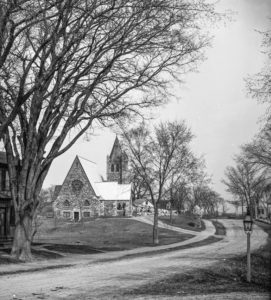
“[In the early 1950’s], the parish began to address the fact that their facilities were woefully inadequate. Instead of building a new sanctuary, All Saints’ built the Parish Hall, with a primary concern for serving the children and youth of the town. The gym and stage indeed became a social center. A church basketball league, plays, performances, dinners and other social events helped All Saints’ become a place where people, young and old gathered. In this time, All Saints’ served as the center of many people’s social lives. In 1960 the new sanctuary was built. Strong lay leadership was behind both building projects.
We have continued to improve our facility by refurbishing our Parish Hall, adding an elevator and ramps for handicap accessibility, and adding air conditioning. We rely heavily on our volunteer and lay leadership, and we are blessed with many talented members who share their gifts.
